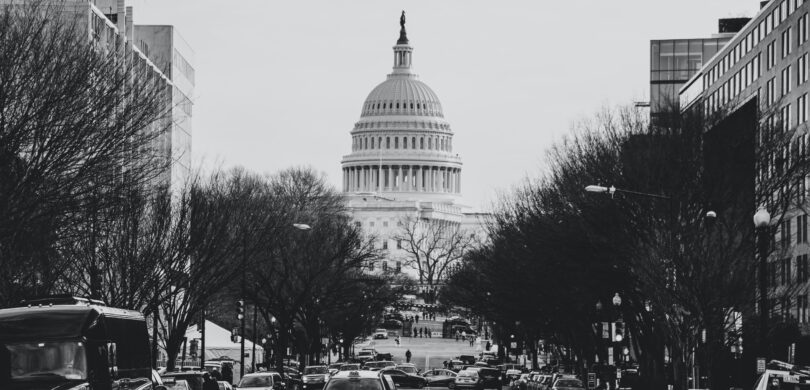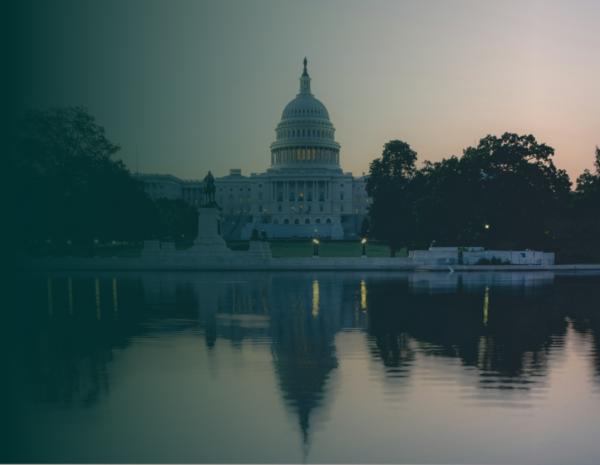UPDATE: In a surprising turn of events, Speaker McCarthy made a last-minute deal with House Democrats to pass a short-term 45-day continuing resolution to keep the government open. The Senate and President approved this legislation shortly before the midnight deadline. This deal prevented an impending government shutdown. Lawmakers now have until mid-December to pass a 2024 budget or another continuing resolution. Despite this positive development, significant challenges (many of them described below) remain. We may once again find ourselves approaching a shutdown deadline come December.
As I write this blog on September 29th, it is virtually guaranteed that the U.S. federal government will partially shut down on Sunday, October 1st. If this is the case, it will be the first time that our government has shut down since 2018. What happens when the government shuts down? In this blog, I’ll discuss how we got here, the impact of the shutdown on policy and policymaking, and how this may end.
How Did We Get Here?
Back in May, I wrote a detailed explanation of the federal budget process without knowing how useful the below passage would be so quickly.

Congress has failed to pass the dozen annual appropriations bills that make up the federal budget. Progress has stalled on passing a continuing resolution (CR) that would grant them more time to do so. That means that lawmakers are barreling towards a government shutdown.
This impending shutdown is unique because there are dynamic disagreements blocking progress on a deal. These disagreements make predicting the outcome of the shutdown especially difficult. This is true for both a short-term continuing resolution or a full budget. Let’s take a look at a few of those:
Senate vs. House Republicans
The Senate is well on its way to passing a CR that would fund the government at current levels through mid-November. This CR would also increase funding for Ukraine aid and FEMA disaster relief funds. The CR passed through the Senate with a sizable majority. However, House Republicans generally agree that any Senate-passed C.R. will be dead on arrival. With Democratic control of the Senate and White House, any deals that come solely from the House G.O.P. are unlikely to become law.
Moderate vs. Conservative House Republicans
House Republicans have their own conference which holds majority control of the lower chamber. Despite this, House Republicans have disagreed on how to fund the government beyond September 30. Many Republican lawmakers have promised to oppose any CR without significant concessions on Ukraine aid and immigration policy. Rather than a CR, they are also attempting to pass partisan individual appropriations bills. Building a moderate, bipartisan coalition to pass a CR in the House, as was done in the Senate, would greatly threaten Speaker McCarthy’s job security by forcing him to work with conservative holdouts.
Democrats vs. Republicans
As ever, the debate over the shutdown will be framed via this partisan dichotomy, and for good reason. Policy disagreements on Ukraine aid, pandemic preparedness, and immigration policy have hampered bipartisan progress in the Senate. These issues are central to passing any long-term funding package. Procedural steps will take place within the halls of Congress, but much of the coming debate will be held in public, over TV and social media. Each party will seek to place blame on the other, especially since public pressure is often important in ending government shutdowns. This fight over public perception of the shutdown will be important to watch.
How Is Policy, and Policymaking, Affected by a Shutdown?
Most shutdowns affect mainly government staffing and government programs. Government staff are generally separated by agency into “essential” or “nonessential” workers. Neither category will receive pay during the shutdown period. However, essential workers, including most members of the military, will continue to work. Nonessential workers would be furloughed.
While millions of federal staffers will go without pay, far more Americans will be impacted by changes to government programs. Federal assistance programs that require annual appropriations, like WIC and Meals on Wheels, could be quickly interrupted. SNAP benefits could be impacted if the shutdown lasts into November. Many national parks and museums are also expected to shut down or reduce operations.
Congress will remain in session. They will, of course, be primarily focused on negotiating an end to the shutdown. Policy developments in immigration and foreign aid could be fast-tracked by the negotiations. However, other ongoing policy debates will likely be delayed until the shutdown is resolved. This includes AI regulations, confirmations of high-level government officials, and efforts to increase disaster preparedness.
How Will a Shutdown End?
The dynamic nature of the disagreements over the shutdown make it difficult to predict how or when this shutdown might end. In the short term, re-opening the government via a CR will require the support of President Biden, a majority of the House, and 60 Senators. Reaching that level of support will require concessions from both parties on immigration policy, Ukraine aid, and overall government spending levels. The path to get there may include uncertain votes, efforts to oust the Speaker, and strange coalitions of lawmakers. We will, of course, be following closely the whole way.
Key Benefits of AI for Lobbying & Advocacy
Want to be able to explain the benefits of artificial intelligence for lobbying and advocacy? Everyone is talking about AI. And we get it, it’s not simple to understand. But as an AI-powered organization, Plural is here to help you get the most out of advancements in AI to make your job as a policy […]
2025 Legislative Committee Deadlines Calendar
Staying on top of key deadlines is manageable in one state, but if you’re tracking bills across multiple states, or nationwide, it quickly becomes overwhelming. That’s why we created the 2025 Legislative Committee Deadlines Calendar. Stay ahead of important dates and download our calendar today. Get started with Plural. Plural helps top public policy teams get […]
End of Session Report: Florida 2024 Legislative Session
The 2024 Florida legislative session saw significant activity in the realm of insurance and financial services, reflecting key themes of consumer protection, market stability, and regulatory modernization.




